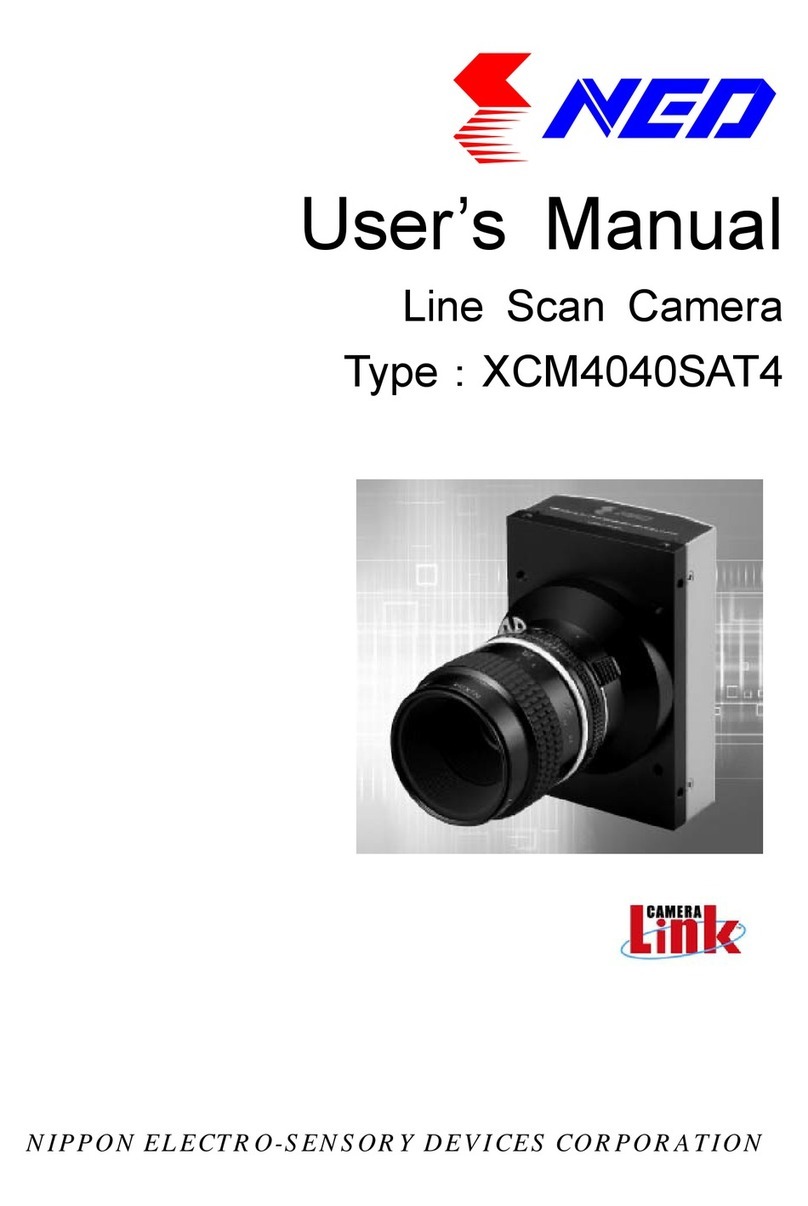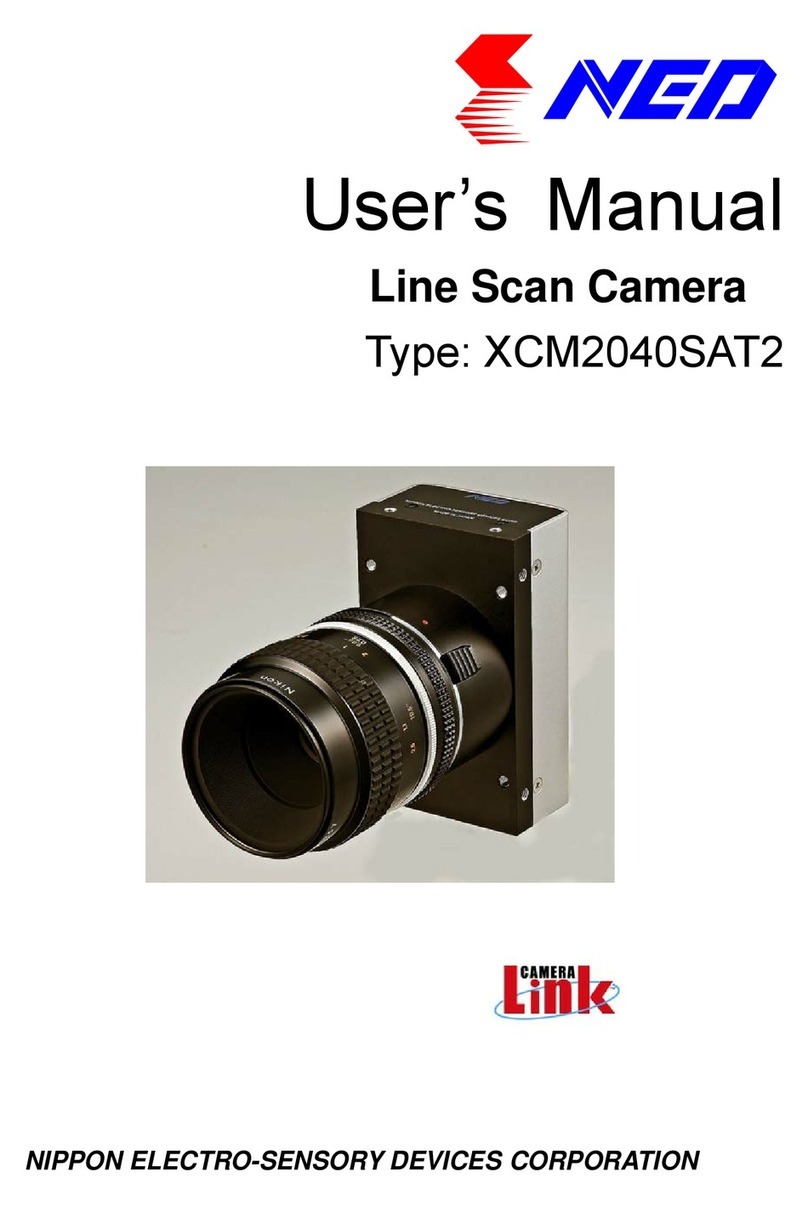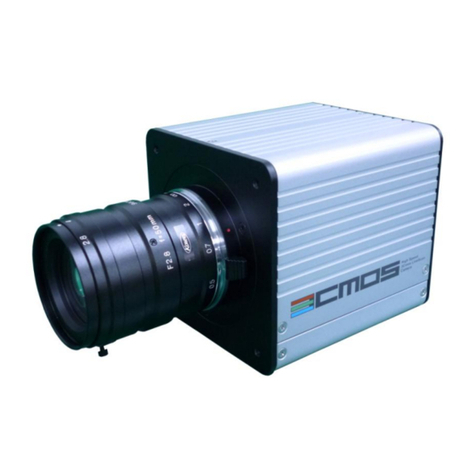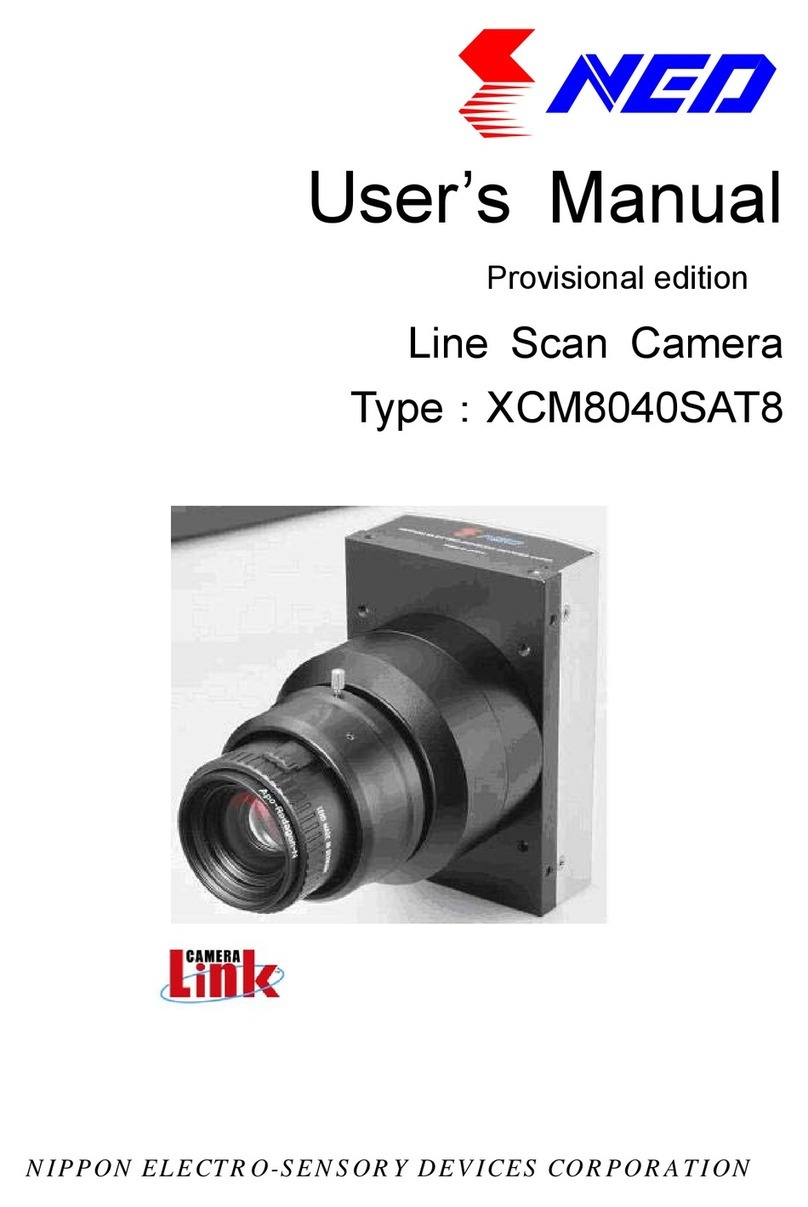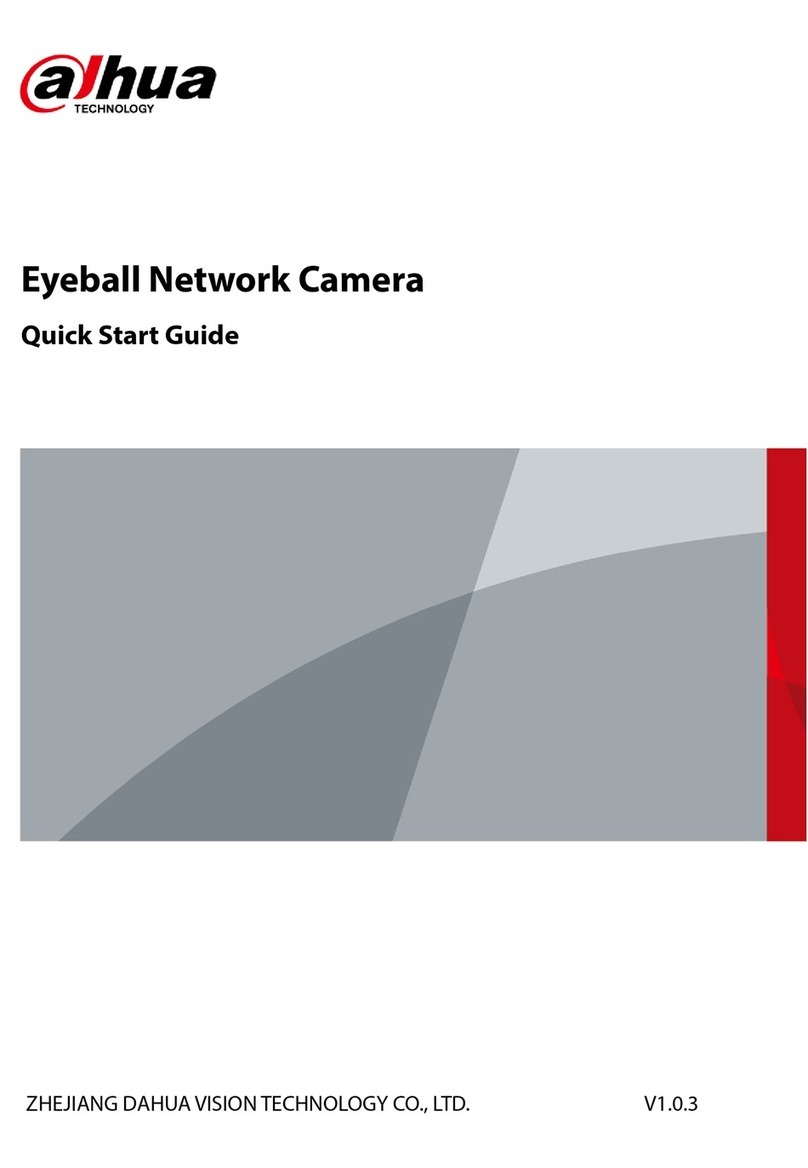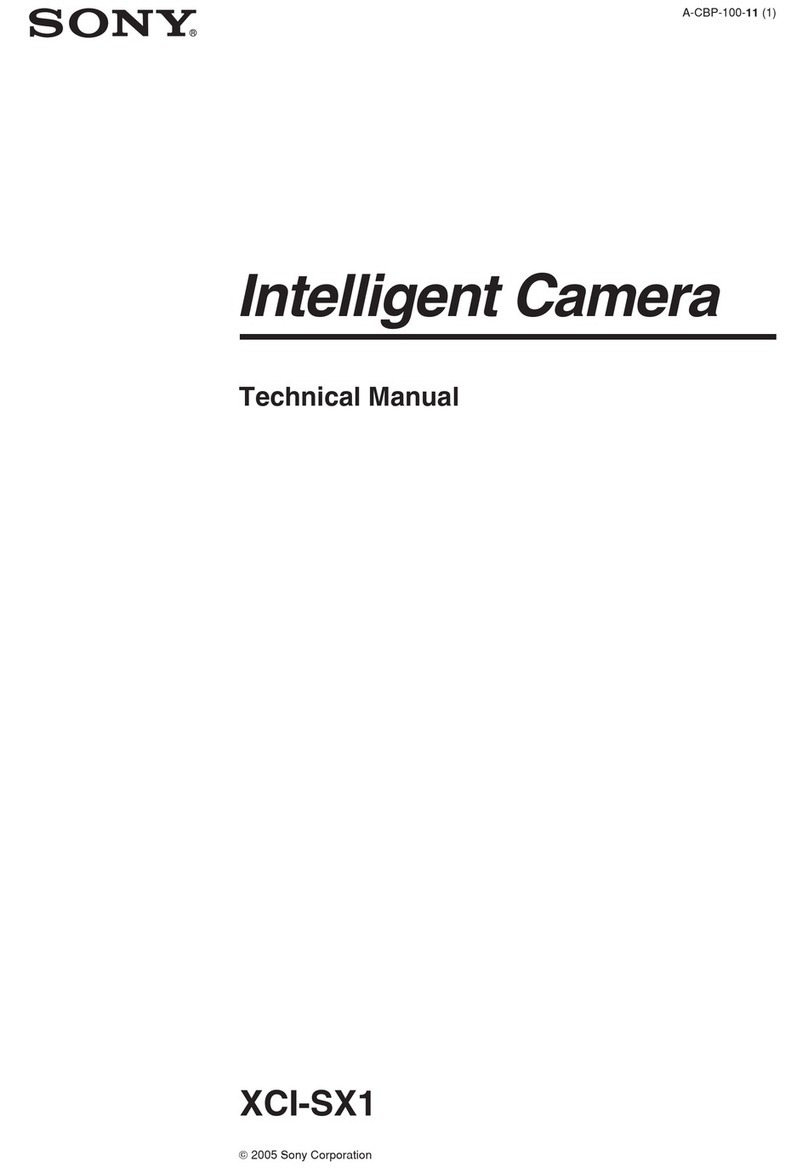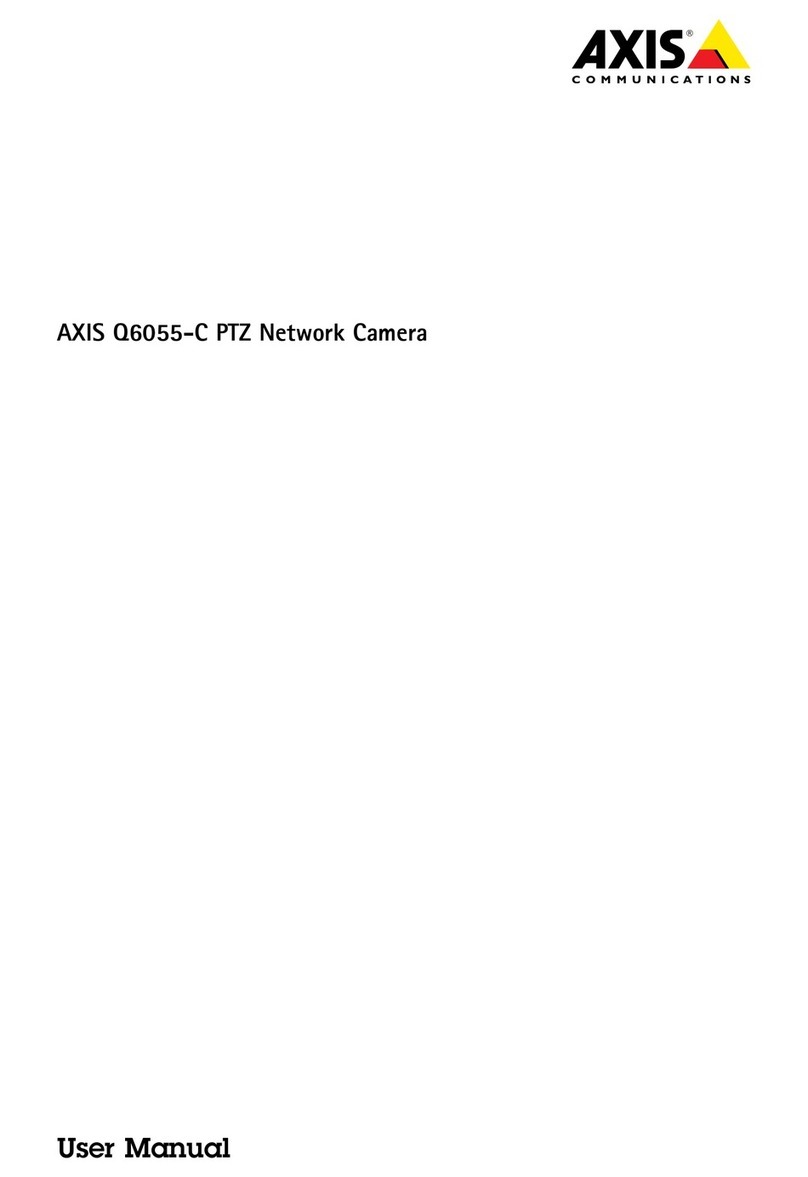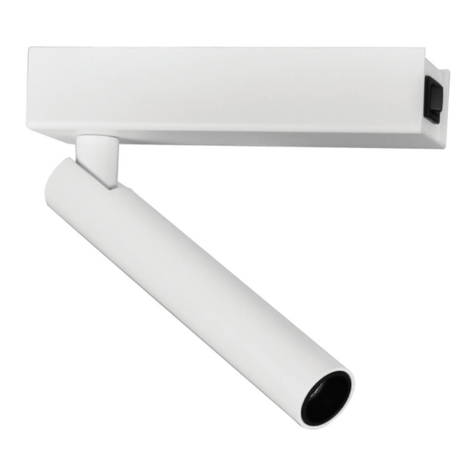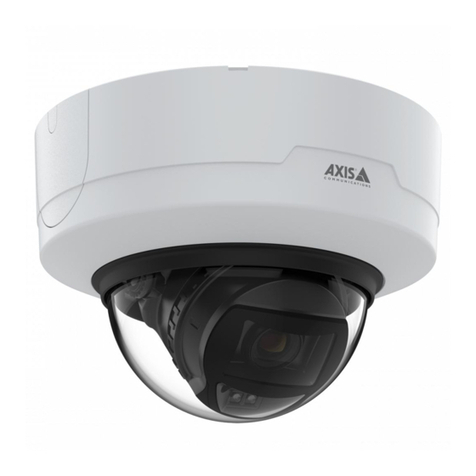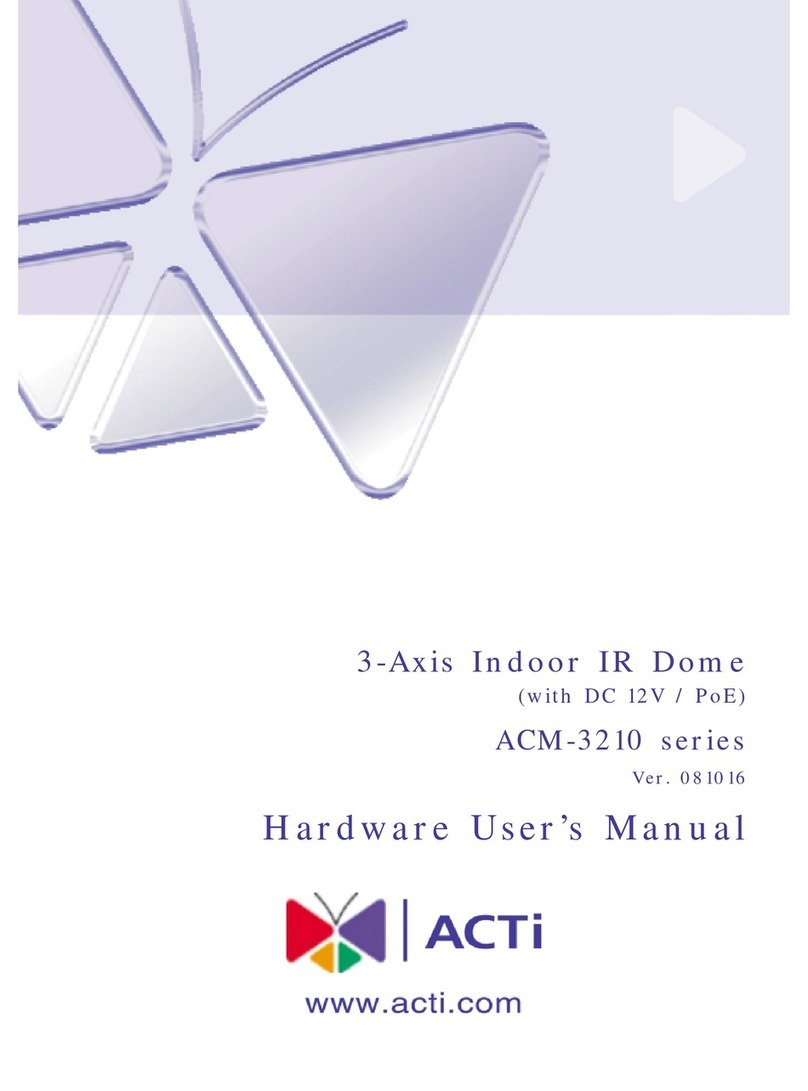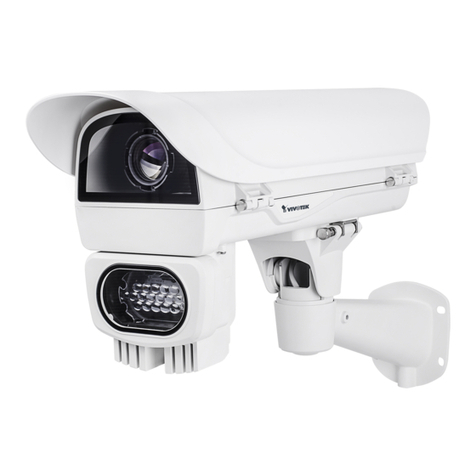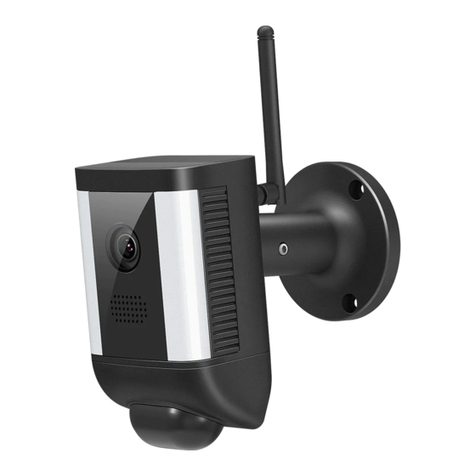NED XCM4040SAT2 User manual

User’s Manual
Line Scan Camera
Type:XCM4040SAT2
NIPPON ELECTRO-SENSORY DEVICES CORPORATION

2 NED
XCM4040SAT2 UME-0009-02
For Customers in the U.S.A.
This equipment has been tested and found to comply with the limits for a Class A
digital device, in accordance with Part 15 of the FCC Rules. These limits are
designed to provide reasonable protection against harmful interference when the
equipment is operated in a commercial environment. This equipment generates,
uses, and can radiate radio frequency energy and, if not installed and used in
accordance with the instruction manual, may cause harmful interference to radio
communications. Operation of this equipment in a residential area is likely to
cause harmful interference, in which case the user will be required to correct the
interference at his or her own expense.
For Customers in the EU
This equipment has been tested and found to comply with the essential
requirements of the EMC Directive 2004/108/EC, based on the following
specifications applied:
EU Harmonized Standards
EN55011:2007+A2:2007 Group1 Class A
EN61000-6-2:2005
*Group 1 contains all ISM (Industrial, Scientific and medical) equipment in
which there is intentionally generated and/or used conductively coupled
radio-frequency energy which is necessary for the internal functioning of the
Equipment itself.
*Class A equipment is equipment suitable for use in all establishments other
than domestic and those directly connected to a low voltage power supply
network which supplies buildings used for domestic purposes.

3 NED
XCM4040SAT2 UME-0009-02
Introduction
Thank you for purchasing NED’s Line Scan Camera. We look forward to
your continued custom in the future.
For safety use
For your protection, please read these safety instructions completely before
operating the product and keep this manual for future reference.
The following symbols appear next to important information regarding safe
product handling.
Warning If the product is not handled properly, this may result in
serious injury or possible death.
Caution If the product is not handled properly, this may result in
physical injury or cause property damage.
Safety precaution
Warning
Never disassemble or modify this product, unless otherwise specified to do
so in this manual.
When hands are wet, avoid handling this product and do not touch any of the
connection cable pins or other metallic components.
Do not operate this product in an environment that is exposed to rain or other
severe external elements, hazardous gases or chemicals.
If the product is not to be used for an extended period of time, as a safety
precaution, always unplug the connection cable from the camera unit.
If the product installation or inspection must be executed in an overhead
location, please take the necessary measures to prevent the camera unit
and its components from accidentally falling to the ground.
If smoke, an abnormal odor or strange noise is emitted from the camera unit,
first turn OFF power, then unplug the cable from the camera unit.
This product is not intended for use in a system configuration built for critical
applications.

4 NED
XCM4040SAT2 UME-0009-02
Instructions before use
Only operate this product within the recommended environmental
temperature range.
Use only the specified power source and voltage rating.
Do not drop this product. Avoid exposure to strong impact and vibrations.
Install the camera unit in a well-ventilated environment, in order to prevent
the camera from overheating.
If the camera must be installed in an environment containing dust or other
particles, take required measures to protect the camera unit from dust
adhesion.
Do not unplug the cable while power is being supplied to the camera unit. To
prevent product damage, always shut down the power supply before
unplugging the power cable.
When the surface of the camera window becomes dirty due to dust or grime,
black smudges appear in the displayed image. Use an air blower to remove
the dust particles. Dip a cotton swab into ethanol alcohol and clean the
camera window. Be careful not to scratch the glass.
Use of non-infrared lighting such as a fluorescent lamp is recommended. If
halogen lighting is employed, always install an infrared filter into your system
configuration.
Please note that exposure to long wavelength light outside of the sensors
visible optical range can affect the image.
Sensitivity may fluctuate depending on the spectral response level of the
light source. In cases like this, changing the light source to one with a
different spectral response level may reduce this problem. Moreover, this
irregular sensitivity can be completely lost by using 4.11 pixel correction
function. Please refer to 4.11 pixel correction function for details.
For stabilized image capturing, turn ON the power supply and execute aging
for ten to twenty minutes before actually using the camera unit.
Do not share the power supply with motor units or other devices that
generate noise interference.
Do not disconnect the camera while rewriting an embedded memory.
When you change exposure mode that is set at NED factory, input control
signal (CC1) from the capture board.

5 NED
XCM4040SAT2 UME-0009-02
Exclusion Clause
The manufacturer assumes no responsibility for damages resulting from
natural disasters, earthquakes, or acts executed by a third party. Warranty
excludes any accidents resulting from improper handling or misuse of this
product, whether intentional or not, and any camera operations conducted
under abnormal conditions.
The manufacturer assumes no responsibility for any incidental damages
(loss of corporate profits, interruption of business, etc.) resulting form use or
non-use of this product.
The manufacturer assumes no responsibility for damages resulting from
failure to follow the instructions and procedures indicated in this User’s
Manual.
The manufacturer assumes no responsibility for any damages resulting from
malfunctions caused by combined use of this product with other peripheral
equipment.
The manufacturer assumes no responsibility for damages resulting from
malfunctions caused by non-authorized repair or modifications made to this
product.

6 NED
XCM4040SAT2 UME-0009-02
Table of Contents
1 Product Outline.................................................................................... 9
1.1 Features.....................................................................................................................9
1.2 Application.................................................................................................................9
1.3 Image Sensor........................................................................................................... 11
1.4 Performance Specifications................................................................................... 11
2 Camera Setting and Optical Interface.................................. 13
2.1 Setting the Camera .................................................................................................13
2.2 Fixing the Camera................................................................................................... 13
2.3 Optical Interface...................................................................................................... 15
3 Hardware................................................................................................ 16
3.1 Camera Connection ................................................................................................16
3.2 Input / Output Connectors and Indicator ..............................................................17
3.3 Connectors・Pin Assignments・Cables ..................................................................18
3.4 Power Supply ..........................................................................................................21
4 Camera Control ................................................................................. 22
4.1 Flow of Camera Control..........................................................................................22
4.1.1 Command Overview.........................................................................................22
4.1.2 Camera Receiving Message (PC Sending Command)................................... 23
4.1.3 Camera Sending Message (PC Receiving Message)..................................... 23
4.1.4 Camera Control Commands ............................................................................ 24
4.1.5 Memory Setup Values (Factory Settings) .......................................................25
4.2 Details on Commands.............................................................................................25
4.2.1 Setting Analog Gain .........................................................................................25
4.2.2 Setting Digital Gain...........................................................................................26
4.2.3 Setting Digital Offset ........................................................................................26
4.2.4 Setting Exposure Mode....................................................................................26
4.2.5 Setting Exposure Time.....................................................................................27
4.2.6 Setting Output Signals 1 (Setting Data Format).............................................27
4.2.7 Setting Output Signals 2 (Setting Linear / Log) ............................................. 27
4.2.8 Memory Initializing (Initializing Camera Settings) ......................................... 28

7 NED
XCM4040SAT2 UME-0009-02
4.2.9 Memory Load ....................................................................................................28
4.2.10 Memory Save .................................................................................................. 29
4.2.11 Generating Test Pattern .................................................................................29
4.2.12 Saving Pixel Correction Data.........................................................................30
4.2.13 Setting Pixel Correction.................................................................................30
4.2.14 Setting Exposure Time - Readout Time........................................................30
4.2.15 Returning the Cameras Settings to the its original status..........................31
4.2.16 Setting the Pixel Readout Direction.............................................................. 32
4.3 Digital Processing flow in FPGA............................................................................32
4.4 Startup......................................................................................................................33
4.5 Saving and Loading Camera Settings................................................................... 33
4.6 Serial Communication Settings .............................................................................34
4.7 Video Output Format...............................................................................................35
4.8 Exposure Mode and Timing Chart......................................................................... 37
4.8.1 Free Run Exposure Mode (Programming time setting).................................37
4.8.2 External Trigger Exposure Mode (Trigger Edge)............................................38
4.8.3 External Trigger Exposure Mode (Trigger Level)...........................................39
4.9 Setting Offset...........................................................................................................40
4.10 Setting Gain...........................................................................................................41
4.11 Pixel Correction.....................................................................................................43
4.11.1 Command Settings.........................................................................................44
4.11.2 How to calibrate the camera ..........................................................................44
4.12 Test Pattern............................................................................................................45
5 Confirming Camera Settings..................................................... 46
5.1 Before Power-on .....................................................................................................46
5.2 After Power-on......................................................................................................... 47
5.3 In Operation............................................................................................................. 50
6 Sensor Handling Instructions................................................... 51
6.1 Electrostatic Discharge and the Sensor................................................................ 51
6.2 Protecting Against Dust, Oil and Scratches .........................................................51
6.3 Cleaning the Sensor Window.................................................................................51
7Troubleshooting................................................................................ 52
7.1 When there is no Image..........................................................................................52

8 NED
XCM4040SAT2 UME-0009-02
7.2 When Noise is present in the Image......................................................................54
7.3 When the Camera becomes hot............................................................................. 56
8 CLISBeeCtrl........................................................................................ 57
8.1 Overview..................................................................................................................57
8.2 System Requirements.............................................................................................57
8.3 Install........................................................................................................................57
8.4 Uninstall................................................................................................................... 57
8.5 Operation.................................................................................................................58
8.5.1 Start Program....................................................................................................58
8.5.2 Selecting interface and Timeout setting.........................................................59
8.5.3.Connect .............................................................................................................62
8.5.4.Disconnect and end program.......................................................................... 63
8.5.5.Check of the contents of communication.......................................................63
8.5.6.Export Parameters to text file.......................................................................... 64
8.5.7.Import Parameters from text file......................................................................64
8.6 Control .....................................................................................................................65
8.6.1 Gains and Offsets.............................................................................................65
8.6.2 Clock & Integration...........................................................................................66
8.6.3 Trigger & Video.................................................................................................67
8.6.4 Intelligence........................................................................................................68
8.6.5 Memory in camera............................................................................................68
8.7 Upgrade....................................................................................................................69
8.8 How to Program ...................................................................................................... 69
8.9 Attention on use......................................................................................................69
9 Others...................................................................................................... 70
9.1 Notice.......................................................................................................................70
9.2 Contact for support.................................................................................................70
9.3 Product Support......................................................................................................71
9.3.1 Warranty card (attach a separate) ...................................................................... 71
9.3.2 When you need to repair ....................................................................................71
Revision History .................................................................................. 72

9 NED
XCM4040SAT2 UME-0009-02
1 Product Outline
1.1 Features
Wide dynamic range (more than 106dB)
High speed readout (40MHz)
High resolution (4096pixels)
On-chip AD conversion
Easy control of gain / offset / video output (8/10bit) with software outside
the camera.
Easy connection with a variety of frame grabber boards via Camera Link
interface
Single power source DC12V to 15 for operation
Flat-field correction – minimizes lens vignetting, non-uniform lighting and
sensor FPN and PRNU
1.2 Application
Inspection of Transparent panels and PCBs
Inspection of high speed moving objects
♦ Using random access reading, High speed inspection becomes
possible because only the required data is being transferred.
Flat panel display inspection
Inspection of glass and sheet-like objects
This camera utilizes an Intelligent Transportation System
Outdoor surveillance
♦ Wide dynamic range prevents the camera from saturation caused by
direct rays and specular refection rays.

10 NED
XCM4040SAT2 UME-0009-02
An example of Visual Inspection of PCBs is shown below.
LED incident
lighting
PCB pattern
Power
supply box
Figure 1-2-1 Visual Inspection of PCBs
Applicable Work
COB, BGA and MCM printed circuit boards
Performance
1. Maximum board size: 100mm×200mm
2. Resolution: 10μm
3. Inspection time: less than 30 seconds
Unit Configuration
1. Camera: Line scan camera
2. Controller: Dedicated software for PC system
3. Size: L930 x D500 x H500 (mm)
Applicable Fields
Inspection of patterns on film PCBs
Line scan camera

11 NED
XCM4040SAT2 UME-0009-02
1.3 Image Sensor
The camera adopts a CMOS sensor with the maximum data rate of 40MHz
to acquire high quality images. The pixels are 7μmx7μm.The camera outputs
its 4096 pixel data through 40MHz-2Tap.
1.4 Performance Specifications
The Performance Specifications are shown in Table 1-4-1. It shows the data
when the camera is operating at maximum scan rate, unless otherwise
specified.
Table 1-4-1 Performance Specifications
Specifications
Items XCM4040SAT2
Number of Pixels 4096
Pixel Size H x V (μm) 7x7
Sensor Length (mm) 28.672
Spectral Responsivity (nm) 400 -1000 (Peak : 625, See Figure 1-4-1)
Data Rate (MHz) 80(40 x 2)
Scan Rate
(μs) / [kHz] 53.6 / [18.66]
Saturation Exposure (lx ・s)
(typically)
0.071[Minimum Gain, Pixel Correction Initial Value,
Daylight Fluorescent Light]
70(V/[lx・s])
Analog 5V Conversion Sensitivity
Responsivity (typically)
[Minimum Gain, Pixel
Correction Initial Value,
Daylight Fluorescent Light]
Visible Area (400~700nm)
40.7(V/[μJ/cm2])
Gain Adjustable Range
*Analog Amplifier +Digital
Analog Amplifier:x1 to x11.2 (21 Steps)
Digital:x1 to x2 (512 Steps)
Offset Adjustable Range
*Digital
Digital:-15 to 15DN (31Steps) 8bit
-60 to 60DN (31 Steps) 10bit

12 NED
XCM4040SAT2 UME-0009-02
FPN (Fixed Pattern Noise) Typically 5DN (without correction, at minimum gain)
2DN (with correction, at minimum gain)
PRNU (Photo Response
Non Uniformity)
Typically 20DN (without correction, at minimum gain)
4DN (with correction, at minimum gain)
Random Noise Typically 20DN (peak value at minimum gain)
Video output Camera Link Base Configuration (8 or10bit / 2tap)
Control Input CC1:External Trigger Signal, CC2-4:Not in use
Data/Controller 3M : MDR26[Camera Link] x 1
Connectors Power Supply Hirose: HR10A (4Pin)
Maximum Cable Length(m) *1) 10
Lens Mount Nikon F Mount
Operating Temperature (˚C)
No Condensation 0 to 50
Power Supply Voltage (V) DC12 to 15 [+/-5%]
Consumption Current (mA)
(typically) 500
Size W x H x D (mm) 80 x120 x 79.7
Mass (g) (Camera only) Approx. 730
Additional Function
1. Shading Correction
2. Programmable Exposure Control
3. Test Pattern Output ON/OFF
4. Scan Direction Switching
*1) Tested under the following conditions.
i Camera Link Cable :14B26-SZLB-A00-0LC by 3M (Full Configuration 10m)
ii Frame Grabber Board : Matrox : SOL 6M CL B by Matrox (Solios : Base Configuration
compatible), or GRAPHIN :IPM-8531CL-M and IPM-8531CL-F
*2) DN : Digital Number (10bit : 0 -1023)
*3) Measurements were made at room temperature.
*4) This product is designed and manufactured in accordance with the following
standards.
EN 55011:1998+A1:1999+A2:2002 Group 1 Class A
EN 61000-6-2:2005
FCC Part 15 Subpart B:2006 Class A

13 NED
XCM4040SAT2 UME-0009-02
The spectral Responsivity is shown below.
2 Camera Setting and Optical Interface
2.1 Setting the Camera
Use the M4 screw holes or the tripod screw hole to set the camera.
An optional mounting base (sold separately) is available.
2.2 Fixing the Camera
Use the M4 screw holes (4 on the front, 8 on the side) to set the camera.
Or use the 1/4"-20UNC screw hole for a tripod (1 place at bottom).
If using the front panel M4 mounting holes (4 places at front, 8 places at side), the
screw length for fixing the camera at the front should be less than 8mm, and less
than 6mm for the side.
No X-, Y-axis orientation and tilt adjustment mechanism is available. Please
prepare an adjustment mechanism if required.
(Ta=25℃)
Fi
g
ure 1-4-1 S
p
ectral Res
p
onsivit
y
20
40
60
80
100
0
400 500 600 700 800 900 1000
Wavelength (nm)
Relative Responsivity (%)

14 NED
XCM4040SAT2 UME-0009-02
The dimensions of the camera are shown below.
DC12-15V
CL1
DIGITAL
LINESCAN
CAMERA
CLISBee S
80
65
34.7
( 79.7 )
46.5(Sensor Optical Distance)
5
10
1/4"-20UNC
60
15
90
4-M4 Depth 6(Both Sides)
NIPPONELECTRO-SENSORY DEVICESCORP.
MADE IN
JAPAN
NIPPONELECTRO-SENSORY DEVICESCORP.
MADE IN
JAPAN
65
Unit : mm
Indicator
Camera Link
Connector(MDR26)
Power Supply Connector
(HIROSE HR10A 4P)
120
70 25
55
Nikon F Mount
1st Pixel
4-M4 Depth 6
(Front Surface)
4-M4 Depth 6
(Top,Bottom)
Figure 2-2-1 Dimensions of the Camera

15 NED
XCM4040SAT2 UME-0009-02
2.3 Optical Interface
For XCM4040SAT2 the Nikon F-mount is available.
The amount and wavelengths of light required to capture useful images
depend on the intended use. Factors include the property, speed, the objects
spectral characteristics, exposure time, the light source characteristics, the
specifications of the acquisition system and so on.
The exposure amount (exposure time x light amount) is the most important
factor in getting desirable images. Please determine the exposure amount
after studying what is most important to your system.
Keep these guidelines in mind when setting up your light source:
LED light sources are relatively inexpensive, provide a uniform field and
longer life span compared to other light sources. However, they also
require a camera with excellent sensitivity.
Halogen light sources generally provide very little blue light but have
high infrared light (IR) proportions.
Fiber-optic light distribution systems generally transmit very little blue
light relative to IR.
Metal halide light sources are very bright but have a shorter life span
compared to other light sources.
Generally speaking, the brighter the light sources, the shorter the life span.
CMOS image sensors are sensitive to infrared (IR). We recommend using
daylight color fluorescent lamps that have low IR emissions. If you use a
halogen light source, to prevent infrared from distorting the images use an IR
cutoff filter that does not transmit wavelengths.

16 NED
XCM4040SAT2 UME-0009-02
3 Hardware
3.1 Camera Connection
Use the camera in the following way:
(1) Camera Link cables must be used to connect the camera unit with the
frame grabber board.
Use two cables of the same length and the same manufacturer. Use
asymmetric Camera Link cables and connect the camera with the connector
labeled as ”Camera side”.
(2) Connect the camera with the designated power supply.
Use the designated power cable to connect the camera with the power
source for the camera. Insert the plug end of the cable into the camera. Attach
the opposite end (loose wires) to the power unit.
Other than those above, a personal computer, a frame grabber board, a
compatible lens, a lens mount, a light source and an encoder are necessary,
depending on the situation.
Figure 3-1-1 Connections between Camera and Frame Grabber Board and Power Supply
There are two connectors available for the Camera Link Medium
Configuration board. Always check the frame grabber board specifications
before making connections.
PC
Camera Link
Base Configuration
Frame Grabber
Board
Line Scan Camera
Camera Link Cable
(3M:14B26-SZLB-xxx-0LC)
Power Cable
Camera Power
Supply
DC +12V 15W
CL1 CL1

17 NED
XCM4040SAT2 UME-0009-02
3.2 Input / Output Connectors and Indicator
The layout of input /output connecters and the LED indicator are as follows.
DC12-15V
CL1
Indicator
Power Supply Connector
(HIROSE HR10A 4P)
Camera Link
Connector (MDR26)
DIGITAL
LINESCAN
CAMERA
CLISBee S
Figure 3-2-1 Input/Output Connectors and Indicator

18 NED
XCM4040SAT2 UME-0009-02
3.3 Connectors・Pin Assignments・Cables
This camera adopts Base Configuration of Camera Link interface standards.
Figure 3-3-1 shows the interface for the camera and a typical implementation
for the frame grabber interface.
Figure 3-3-1 Camera / Frame Grabber Interface
Set the LVDS, Channel Link receiver side to 100 ohm termination.
Do not make the driver side of LVDS open but set the logic to H or L, even if
not used.
Figure 3-3-2 Circuit of LVDS
+
-
100Ω
+
-
Driver Receiver
H or L
28 28
Frame Grabber BoardCamera
26-pin MDR Connector CL1
CC1(control input)
Cable
SerTC
SerTFG
CK40MHz
Channel Link Bus
LVAL,FVAL
DVAL,SP
PortA~C
CC2
CC3
CC4
X1±
X0±
X2±
X3±
XClk±
100Ω
100Ω
100Ω
100Ω
100Ω
100Ω
100Ω
100Ω
100Ω
100Ω
100Ω
SerTFG±
SerTC±
CC1±
CC2±
CC3±
CC4±
26-pin MDR Connector
X1±
X0±
X2±
X3±
XClk±
SerTFG±
SerTC±
CC1±
CC2±
CC3±
CC4±
LVDS_DRIVER(NS)
DS90CR285MTD
equivalent
LVDS_DRIVER/
RECEIVER(NS)
DS90LV019TM
equivalent
LVDS_RECEIVER(NS)
DS90LV048AT
equivalent
LVDS_RECEIVER(NS)
DS90CR286MTD
recommended
LVDS_DRIVER/
RECEIVER(NS)
DS90LV019TM
recommended
LVDS_DRIVER(NS)
DS90LV047AT
recommended

19 NED
XCM4040SAT2 UME-0009-02
The camera has 26-pin MDR connectors for control signals of Camera Link,
data signals and serial communications. The camera also has a 4-pin
HIROSE connector for power supply.
Figure 3-3-3 Camera Link Connector
Half pitch (miniature half ribbon) shape
Locking screw (UNC #4-40) type
1
14
2
15
3
16
11
24
12
25
13
26

20 NED
XCM4040SAT2 UME-0009-02
Table 3-3-1 Camera Link Connector (26-pin MDR Connector) pin assignments
CL1(BaseConfiguration)
No NAME No NAME I/O
1 Inner Shield 14 Inner Shield
2 X0- 15 X0+ Out
3 X1- 16 X1+ Out
4 X2- 17 X2+ Out
5 Xclk- 18 Xclk+ Out
6 X3- 19 X3+ Out
7 SerTC+ 20 SerTC- In
8 SerTFG- 21 SerTFG+ Out
9 CC1- 22 CC1+ In
10 CC2+ 23 CC2- In
11 CC3- 24 CC3+ In
12 CC4+ 25 CC4- In
13 Inner Shield 26 Inner Shield
Explanation of Signals
Inner Shield : Shield cable (GND)
X0+,X0-…X3+,X3- : Data output (Channel Link)
Xclk+,Xclk- : Clock output for above data output synchronization (Channel Link)
SerTC+, SerTC- : Serial data input (LVDS)
SerTFG+, SerTFG- : Serial data output (LVDS)
CC1+,CC1- : External synchronous signal input (LVDS)
CC2+,CC2- : Not in use (LVDS)
CC3+,CC3- : Not in use (LVDS)
CC4+,CC4- : Not in use (LVDS)
Camera Link compatible cable
3M :14B26 -SZLB - xxx - 0LC by or equivalent
To avoid uncoupling of the cable connectors during power on, make sure to
clamp them with the locking screws.
Do not unplug the cables while power is being supplied to the camera.
Table of contents
Other NED Security Camera manuals
Popular Security Camera manuals by other brands
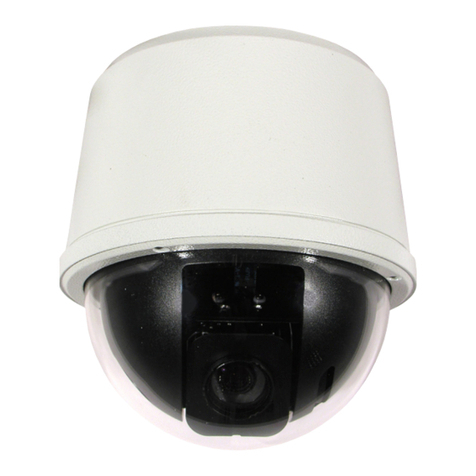
360 Vision
360 Vision Visiondome-VR Installation & configuration manual
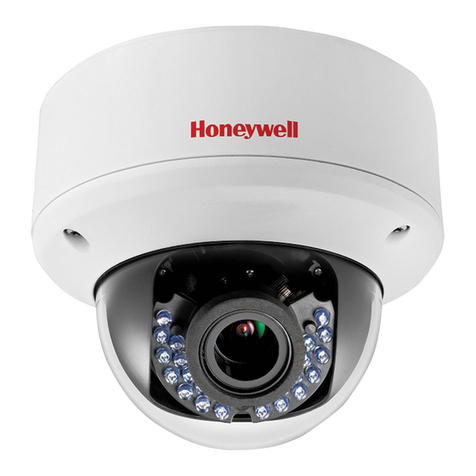
Honeywell
Honeywell HD273H user guide
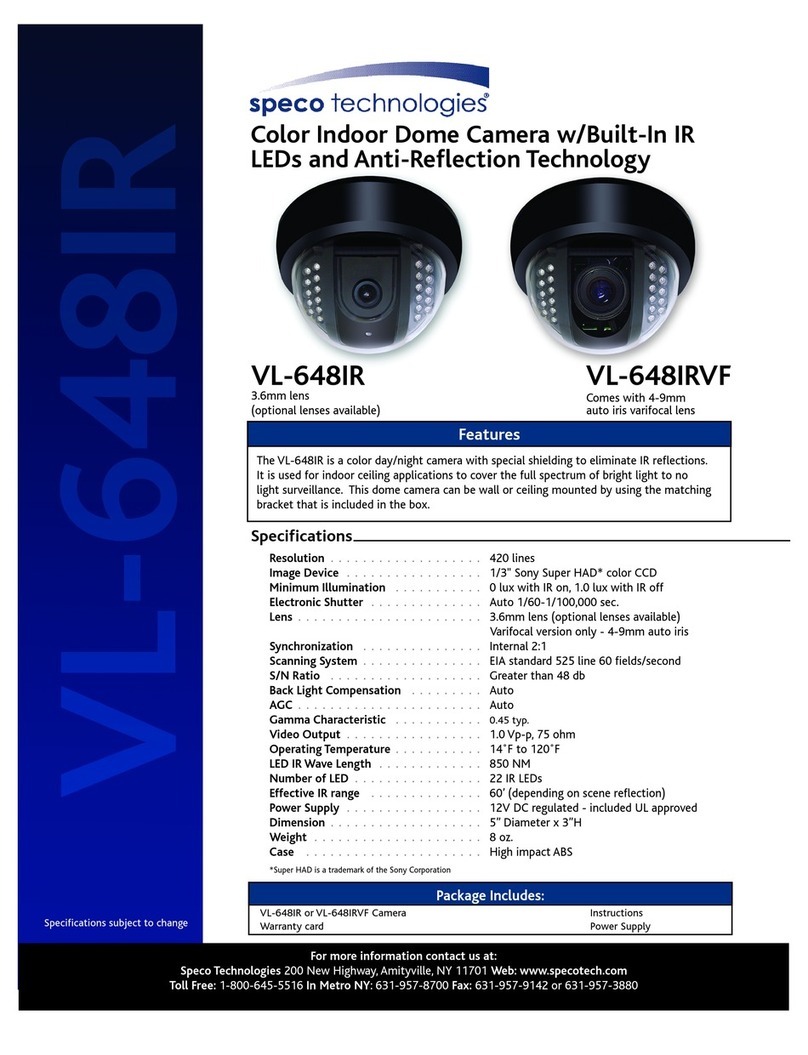
Speco
Speco VL-648IR Specification sheet
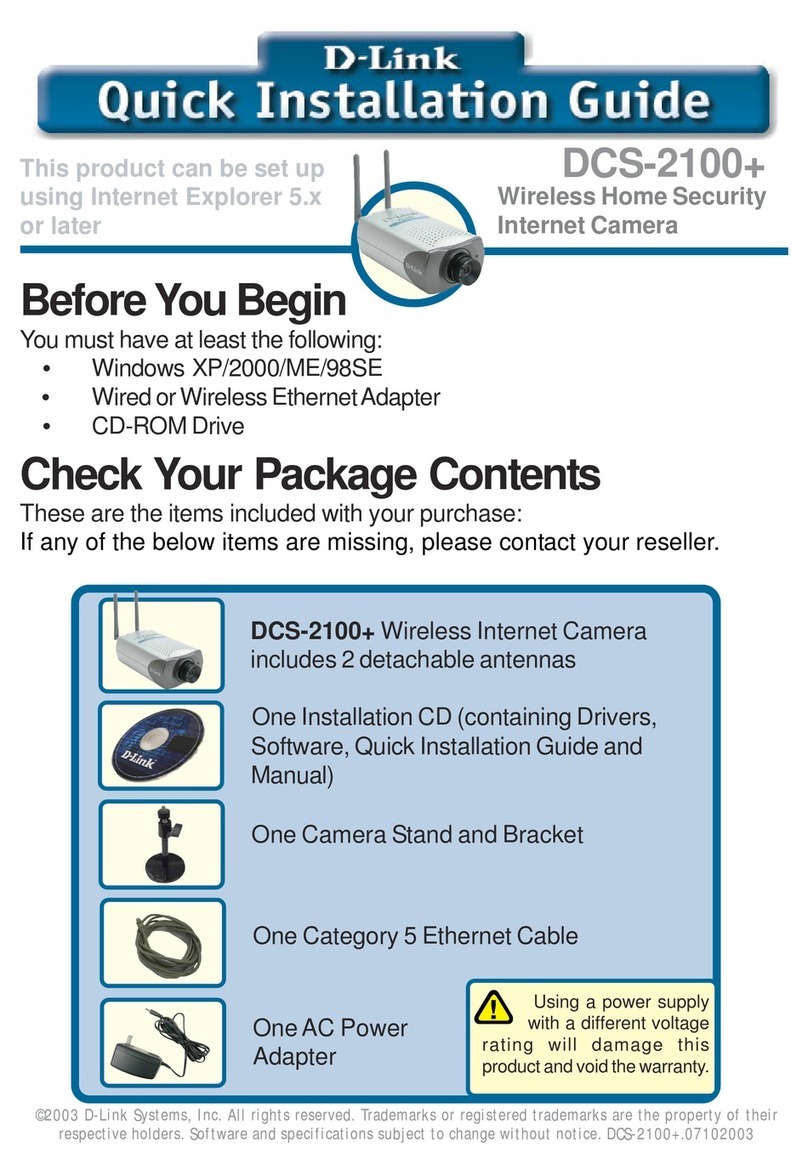
D-Link
D-Link SECURICAM Network DCS-2100+ Quick installation guide
Vicon
Vicon CRUISER S660V Installation and operation guide
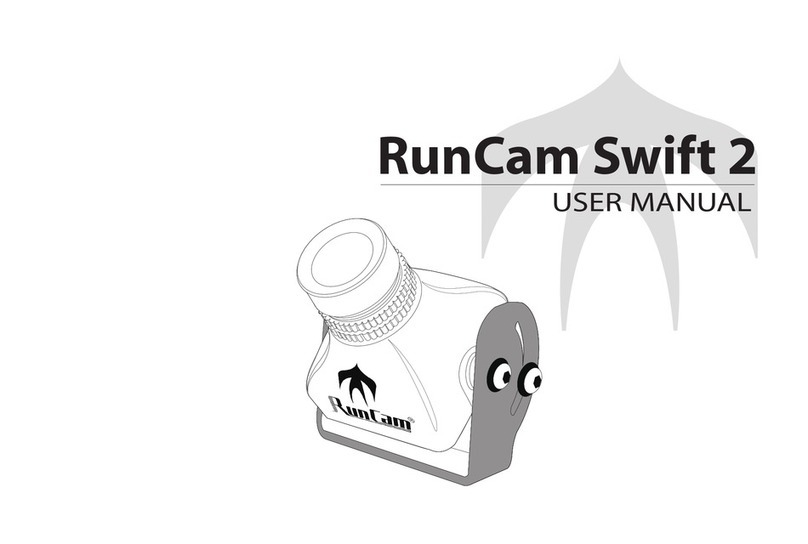
RunCam
RunCam New Swift 2 user manual

